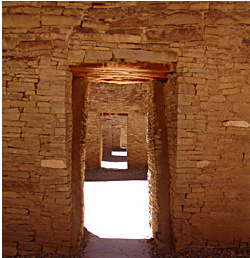Publication Date
5-11-2019
Abstract
This project aims to provide a culture-ecological explanation of variation and change among microblade-based societies in Northeastern Asia during the late Pleistocene and early Holocene between c. 30,000 - 6,000 years ago. Assuming that paleoenvironmental changes stimulated cultural changes due to available food resources and that local environment conditioned cultural variation, the development of microblade-based societies can be divided into four phases (c.30-22 kya, 22-15 kya, 15-10 kya, 10-c.1 kya uncal. BP) in four regions (north continental, south continental, north insular, and south insular).
The study’s macroecological approach based on Constructing Frames of Reference (Binford 2001) is applied to elucidate the dynamics and mechanisms of cultural variation and change among microblade-based societies. After mapping the main impacts of Last Glacial Maximum (LGM) climatic conditions on the lifeways of hunter-gatherers, output files of the EnvCalc2.1 program under glacial and interglacial climatic conditions provide comparative frames of reference for the microblade-based societies in Northeast Asia. This dissertation combines the macroecological approach, the paleoclimate record, and lithic technological organization against the background of two waves of cultural change. The first wave involved the formation and convergence of microblade-based societies (in MIS 3 to MIS 2, Phase I to Phase II), referring to case studies in the “Southern Siberia Belt” and Northern China, while the second wave was the development and ultimate divergence of microblade-based societies (MIS 2 to MIS 1, Phases II and III to Phase IV), involving case studies in the Japanese Archipelago, Eastern Siberia, Northern China, and the Tibetan Plateau.
The six case studies suggest that the macroecological approach is much more productive and has greater explanatory power than previous, culture-historical studies of the microblade phenomenon. The results of the analyses suggest that the origin and spread of microblade technology involved complex cultural processes driven by the reduction of ungulate biomass under LGM climatic conditions and existing local technological traditions, rather than being simply explained by human migration events eastward to the Paleo-Sakhalin-Hokkaido-Kuril (PSHK) Peninsula and southward to Northern China from the Transbaikal region of Eastern Siberia. During the Pleistocene to Holocene transition, the shift from Late Paleolithic to Mesolithic-like industries in the Japanese Archipelago and Eastern Siberia, hallmarked by replacement of microblade technology with alternative stone point technologies, was associated with relatively higher percentages of aquatic resources in human subsistence, adoption of ceramic technology, and the establishment of sedentism. The adoption of agriculture in Northern China was associated with decline of microblade technology during the early Holocene, a phenomenon that is explained in the macroecological approach by replacement of hunting-dominated economies by gathering- and/or- fishing-dominated economies linked with population growth during the interglacial or interstadial periods, matching the maps under the packed condition of regional population. The three stages of development of microblade-based societies on the Tibetan Plateau witnessed colonization from the northeastern and southeastern edges of this major upland, suggesting that the combination of hunting-gathering and farming economies helped early Tibetans to fully occupy the Earth’s highest associated with low effective temperatures and a short growing season. Thus, the diversification of microblade-based societies during the post-LGM resulted as responses to diverse environmental conditions across this vast region of the world during a time of major climatic fluctuations.
Keywords
microblade technology, microblade-based societies, Northeastern Asia, macroecology, frames of reference, Last Glacial Maximum
Project Sponsors
Binford Fellowship from the UNM Anthropology Department, a Chinese Government Award for Outstanding Self-financed Students Abroad from the China Scholarship Council (2013), a Moore Research Grant from the Department of Anthropology at the University of New Mexico, the Doctoral Fellowship, Chiang Ching-kuo Foundation for International Scholarly Exchange (Project number: DD005-A-17)
Document Type
Dissertation
Language
English
Degree Name
Anthropology
Level of Degree
Doctoral
Department Name
Anthropology
First Committee Member (Chair)
Lawrence G. Straus
Second Committee Member
Bruce Huckell
Third Committee Member
Robert Hitchcock
Fourth Committee Member
Amber L. Johnson
Fifth Committee Member
Pei-Lin Yu
Recommended Citation
Zhang, Meng. "Explaining Variation and Change Among Late Pleistocene and Early Holocene Microblade-Based Societies in Northeastern Asia." (2019). https://digitalrepository.unm.edu/anth_etds/167

